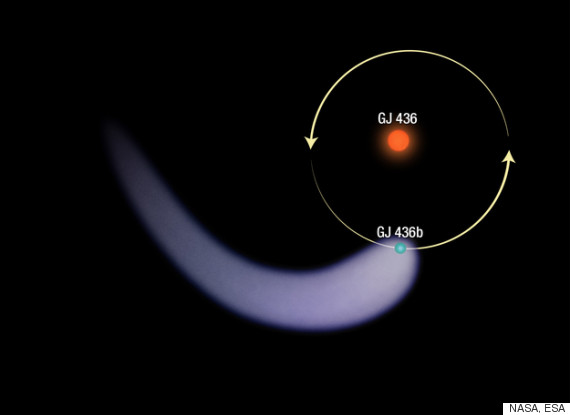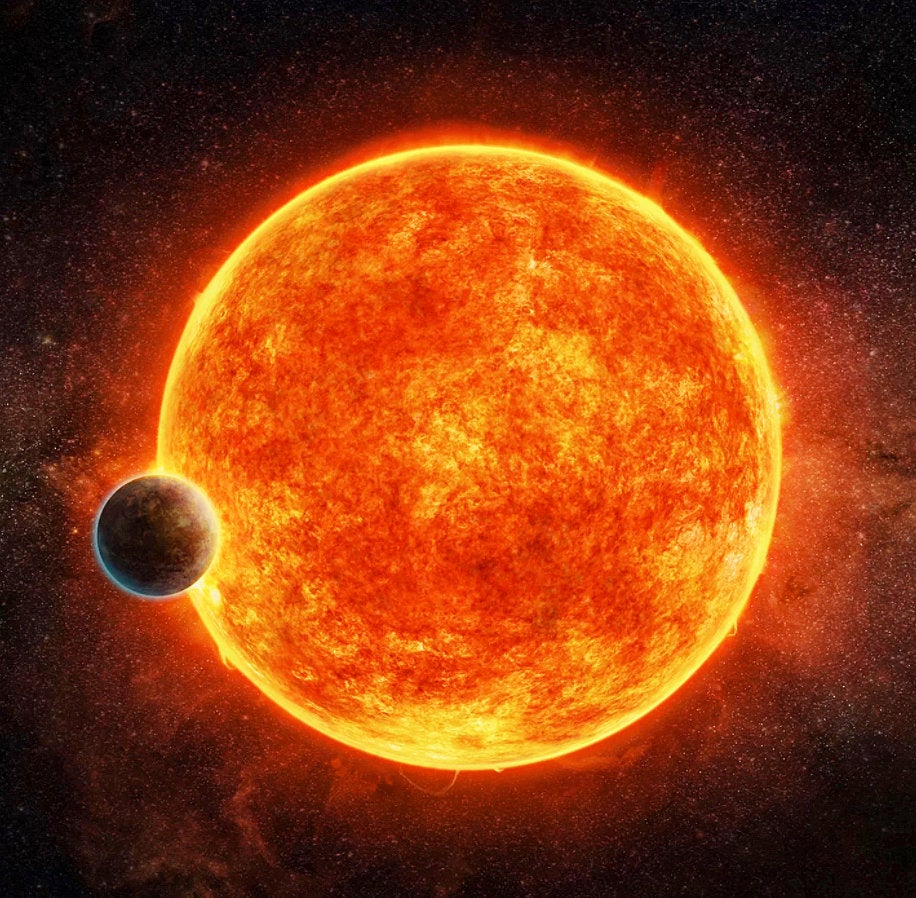A Neptune-sized alien world about 30 light-years from Earth is unlike any exoplanet yet found.
The bizarre planet, named Gliese 436b, has a huge comet-like tail of mostly hydrogen gas extending more than 9.3 million miles, computer models suggest. The cloud of gas around the planet has a circular head about 1.8 million miles in diameter. A planetary tail of that size had never before been seen around such a small exoplanet.
Astronomers detected the massive tail using the Hubble Space Telescope and the Chandra X-Ray Observatory, and they think it's the result of the planet's atmosphere evaporating away due to extreme radiation from the planet's host star. Gliese 436b orbits its host star at a distance of about 4 million kilometers. (The Earth orbits the sun at a distance of about 150 million kilometers.)
"This cloud of hydrogen is very spectacular," David Ehrenreich, an astronomer at the Observatory of the University of Geneva in Switzerland and lead author of a study describing the planet's tail, said in a written statement. "Although the evaporation rate doesn't threaten the planet right now, we know that the star, a faint red dwarf, was more active in the past. This means that the planet's atmosphere evaporated faster during its first billion years of existence. Overall, we estimate that it may have lost up to 10 percent of its atmosphere."
(Story continues below.)
A polar view of planet Gliese 436b and its long, comet-like tail orbiting its host star. The exoplanet orbits it in just 2.6 Earth days.
The astronomers plan to continue seeking and conducting research on similar exoplanets to determine whether they too might have comet-like tails. In fact, Vincent Bourrier, an astronomer at the university and co-author of the study, said in the statement that he expects thousands of such planets will be discovered.
"Finding the cloud around Gliese 436b could be a game-changer for characterizing atmospheres of the whole population of Neptunes and Super-Earths in ultraviolet observations," he said.
The study was published online in the journal Nature on June 24, 2015.

